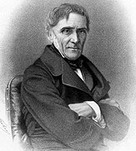Electrochemical sources of current
Approximately until 1870 the most common sources of current were electrochemical cells, i.e. galvanic cells and accumulators. In the future, electric motors were the predominant type of electric current source.
The simplest galvanic elements were elements with one liquid; To the number of such elements belonged to the voltaic column and its modifications - the cup element of Volta, etc. All such current generators were characterized by shortcomings that complicated their application, and consequently, the introduction of practical electrical devices based on such generators.
Among the most significant shortcomings are: a relatively rapid weakening of the battery, caused, as it was later found, galvanic polarization, low energy intensity, as well as the inconvenience of operation and inadequacy of batteries for transportation.
In most galvanic cells, zinc was used as the negative electrode, the high expenditure of which determined the high cost of the generated energy. If zinc was not clean enough and gained impurities (lead, iron, etc.), then when immersing its sulfuric acid solution, local currents appeared. This led to the fact that even with an open external circuit, zinc interacted with the acid and dissolved.
Until fundamentally new generators of electric current were built, it was necessary to look for opportunities in some way to eliminate at least some of the listed shortcomings.
Investigations of processes in galvanic cells led to the discovery of the phenomenon of galvanic polarization ( AS Becquerel , 1826), which was explained by the accumulation of hydrogen bubbles in a copper electrode.
 Polarization of electrodes has a strong influence on the constancy of the action of the element. Various means have been tried to eliminate the polarization: mechanical removal of the copper electrode from the copper electrode as it forms, giving the electrode a rough surface so that hydrogen bubbles are more difficult to pester, etc.
Polarization of electrodes has a strong influence on the constancy of the action of the element. Various means have been tried to eliminate the polarization: mechanical removal of the copper electrode from the copper electrode as it forms, giving the electrode a rough surface so that hydrogen bubbles are more difficult to pester, etc.
However, a practical solution was actually achieved by absorbing hydrogen as a result of a chemical reaction that originated in the element with the participation of a second liquid serving as a depolarizer.
In 1829, Becquerel gave a principled design of a galvanic cell with two liquids: a vessel (separated by a porous septum (for example, from slightly calcined clay) into two parts, each containing one of the liquids and one electrode.
In the first samples of the new galvanic cell, two liquids were used: nitric acid and potash solution, and one dose of electrodes was made from platinum.
Later Becquerel built a cheaper element in which a solution of table salt was poured into one half of the vessel and the zinc electrode was immersed, and in the other half of the vessel, separated by a porous septum, a solution of copper sulfate into which the copper electrode was immersed.
Since that time (1829) galvanic cells with one liquid are almost out of use. In a short period of time a number of improved designs of galvanic cells with two liquids appeared. To make the zinc electrode more stable and eliminate the harmful effect of impurities that can be contained in zinc, amalgamation of the surface of the zinc electrode was introduced.
Another direction in the field of creating electrochemical current sources was the construction of electric accumulators, or "secondary elements", as they were called for a long time.
The fundamental possibility of accumulating electric energy was established at the beginning of the nineteenth century, but only in 1854 the German physician VI Zinsteden discovered a method of accumulating large amounts of electric energy, observing a phenomenon of polarization different from the usual galvanic polarization.
This phenomenon consisted in the fact that when a current was passed through lead electrodes immersed in dilute sulfuric acid, the positive electrode was covered with lead dioxide. When the electrodes of such an element were shorted, a strong current was produced for a longer time than the usual polarization current; Such a phenomenon in the chain was observed until all the dioxide of lead was consumed.
In 1859 the Frenchman Gaston Plante , apparently independent of Zinstenden, observed the same phenomenon and based on it built a lead accumulator. Very soon it was found that the more porous the lead on one electrode and the lead dioxide on the other, the greater the reserve of electrical energy will contain the battery. This porosity was achieved over time by prolonged repetition of charging and discharge of the battery; Only after about 500 hours of battery operation did sufficient formation of its plates occur.
The artificial formation of battery plates was introduced into practice in the 1980s, and this contributed to a significant improvement in the performance of batteries.
Source of information: ON Veselovsky, YA Shneiberg Essays on the History of Electrical Engineering . Educational edition. M .: Publishing house MPEI, 1993.


Comments
When commenting on, remember that the content and tone of your message can hurt the feelings of real people, show respect and tolerance to your interlocutors even if you do not share their opinion, your behavior in the conditions of freedom of expression and anonymity provided by the Internet, changes Not only virtual, but also the real world. All comments are hidden from the index, spam is controlled.